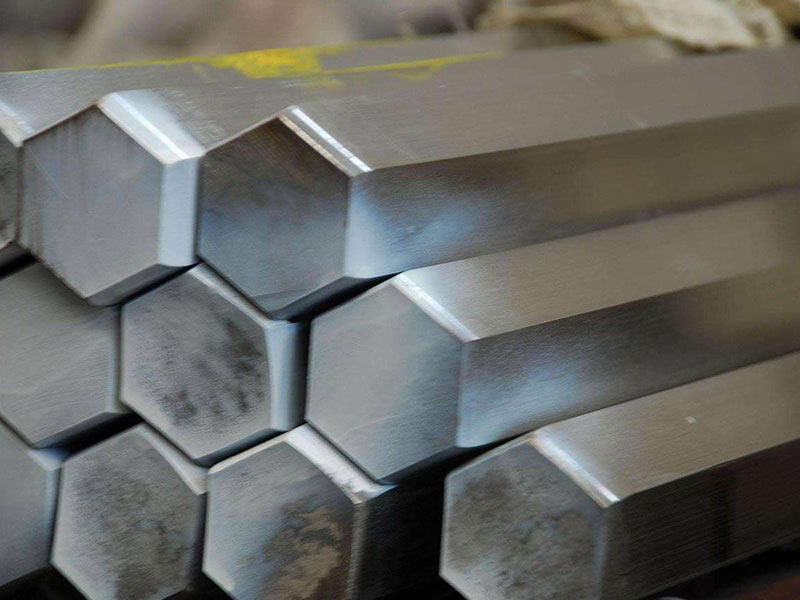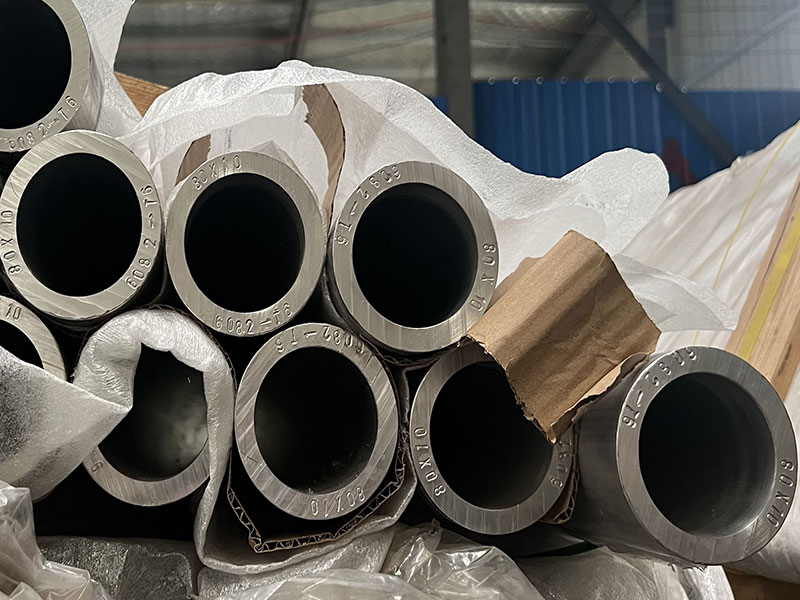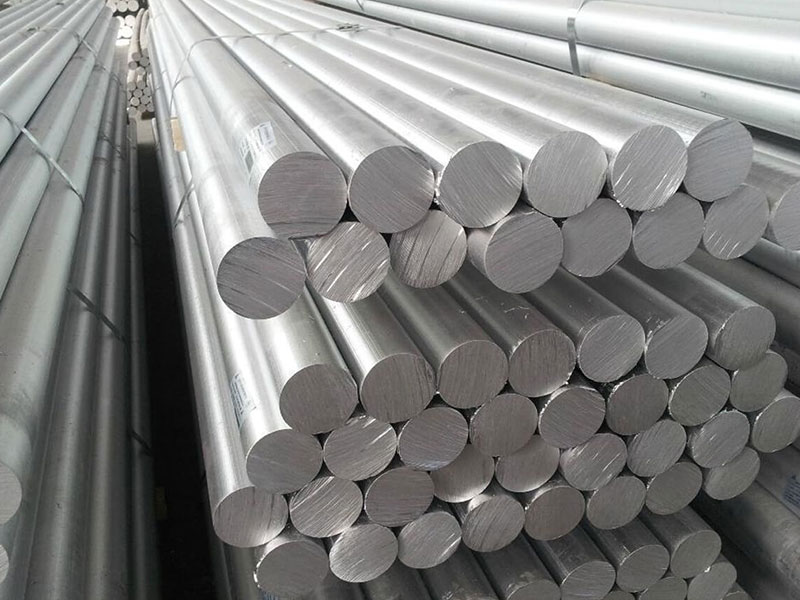6061 Marine Aluminum Hollow Bars for Marine Hull Repair Parts
6061 Marine aluminum hollow bars are a high-performance, versatile material used extensively in marine hull repair parts. Combining excellent corrosion resistance, good mechanical strength, weldability, and machinability, 6061 alloy in hollow bar form is ideal for structural and non-structural components in marine environments — from small craft fittings to large ship repair sections.
6061 is an aluminum–magnesium–silicon alloy (Al-Mg-Si) widely used in marine and structural applications. In hollow bar form, 6061 offers several advantages for hull repair parts:
- High corrosion resistance in seawater and humid environments (especially when properly anodized or coated).
- Good strength-to-weight ratio for structural repairs where added mass is a concern.
- Excellent weldability (TIG, MIG, friction stir) allowing in-situ repairs and fabrication.
- Good machinability for precision components, fittings, adapter sleeves, standoffs, struts, and piping supports.
- Uniform mechanical properties across the cross-section due to controlled processing of hollow bars.
- Availability in various tempers to balance strength and toughness requirements.
Typical Marine Hull Repair Functions & Components
6061 Marine aluminum hollow bars are used for many hull repair parts and functions:
- Structural reinforcement sleeves and splice collars for welded or riveted joints.
- Replacement sections for stringers, stiffeners, and frames where hollow geometry reduces weight.
- Shaft supports, bearing housings, and spacer sleeves for propulsion and steering systems.
- Standoffs, bushing liners, and spacer tubes in deck and superstructure repairs.
- Corrosion-resistant sleeves for cathodic protection anodes, conduit encasements, and pipe supports.
- Fabricated adapters and custom repair fittings that require reliable weldability and post-weld strength.
Alloy Tempering Conditions and Typical Tempers for Hollow Bars
6061 alloy is commonly supplied in several tempers. The temper affects strength, ductility, and suitability for welding:
- O (Annealed): Maximum ductility, minimum strength. Used when extensive forming is required.
- T4 (Solution heat-treated and naturally aged): Moderately high ductility; used when further artificial aging is planned.
- T6 (Solution heat-treated and artificially aged): Most common for structural parts—good combination of strength and ductility.
- T651 (T6 with stress relief by stretching): Reduces residual stresses, useful for precision parts and to minimize distortion during machining or welding.
Recommended tempers for marine hull repair hollow bars:
- T6 or T651 for high-strength replacement members and fittings.
- T4 or O where forming or reshaping is required prior to final aging.
Chemical Composition (Typical Limits) — 6061 Alloy
| Element | Typical Range (wt%) |
|---|---|
| Si | 0.4 – 0.8 |
| Fe | 0.7 max |
| Cu | 0.15 – 0.40 |
| Mn | 0.15 max |
| Mg | 0.8 – 1.2 |
| Cr | 0.04 – 0.35 |
| Zn | 0.25 max |
| Ti | 0.15 max |
| Others (each) | 0.05 max |
| Others (total) | 0.15 max |
| Al | Balance |
Notes: Composition ranges follow typical specifications for 6061 (e.g., ASTM B221 / AMS 4100 / ISO equivalents). Always confirm chemical composition with supplier mill certificates for specific batches.
Mechanical Properties (Typical) by Temper
| Property | 6061-O (Annealed) | 6061-T4 | 6061-T6 / T651 |
|---|---|---|---|
| Tensile strength (MPa) | ~125 – 145 | ~230 – 260 | ~275 – 310 |
| Yield strength (MPa) | ~40 – 55 | ~150 – 190 | ~240 – 275 |
| Elongation (%) | 10 – 20 | 10 – 12 | 8 – 12 |
| Hardness (HB) | ~30 – 40 | ~60 – 70 | ~70 – 90 |
| Density (g/cm3) | 2.70 | 2.70 | 2.70 |
| Modulus of Elasticity (GPa) | 69 | 69 | 69 |
Notes: Values are typical; exact properties depend on manufacturing process, hollow bar wall thickness, diameter, and temper. T651 includes stress relief and often shows slightly improved yield stability.
Corrosion Resistance and Marine Performance
- 6061 has good general corrosion resistance in atmospheric and marine environments due to protective oxide film formation.
- In seawater, 6061 performs well for many applications but is not as corrosion-resistant as 5xxx series (Al-Mg) alloys. For immersed or splash-zone components, proper anodizing, sacrificial protection, or coatings are recommended.
- Prefer designs that avoid crevices and bimetallic contacts with more noble metals (steel, copper) without isolation, to prevent galvanic corrosion.
- Cathodic protection and coatings: use epoxy primers, marine paints, or anodizing for long-term durability. Consider sacrificial anodes if used as underwater structural parts.
Fabrication & Welding
- Welding: 6061 is readily weldable using TIG (GTAW), MIG (GMAW), and friction stir welding. Use compatible filler alloys (e.g., 4043 or 5356) chosen by application: 4043 reduces cracking tendency; 5356 provides higher strength but slightly higher galvanic potential.
- Post-weld heat treatment: Welding locally reduces strength in the heat-affected zone (softening). For critical structural repairs requiring full-strength, perform solution heat treatment and artificial aging (T6) where feasible, or design to accommodate reduced local strength.
- Machining: Hollow bars machine cleanly with appropriate tooling; higher tempers (T6) can be slightly more challenging than O/T4.
- Forming: 6061-T6 has limited formability. Use O or T4 tempers for forming and then age to T6 if final strength is needed.
Dimensional and Geometric Considerations
6061 hollow bars for marine applications are available in a range of outer diameters, inner diameters (wall thicknesses), and lengths. Typical available sizes depend on supplier; common ranges:
| Parameter | Typical Range |
|---|---|
| Outer diameter (OD) | 20 mm – 400 mm (and larger for custom) |
| Inner diameter (ID) | 6 mm – OD-4 mm (varies by wall) |
| Wall thickness | 2 mm – 50 mm |
| Length | 1 m – 6 m standard; cut-to-length available |
| Surface finish | Mill, polished, anodized, buffed |
Manufacturers can supply custom-machined ends, precision bore sizes, or final machining to print for hull repair components.
Implementation Standards and Specifications
Common standards for 6061 aluminum hollow bars and extruded products used in marine repairs:
| Standard | Scope |
|---|---|
| ASTM B221 | Standard Specification for Aluminum and Aluminum-Alloy Extruded Bars, Rods, Wire, Profiles, and Tubes |
| AMS-QQ-A-200/8 (historical) | Aerospace/military specifications for aluminum alloys — use appropriate modern AMS or ASTM equivalents |
| ISO 6361 | Wrought aluminum and aluminum alloy sheets, strips and plates (chemical/physical properties) — refer to ISO equivalents for extrusions |
| EN 573 / EN 755 | European standards for chemical composition and mechanical properties of wrought products |
| MIL-A-8625 | Anodic coatings for aluminum (for anodizing practices) |
Always consult project-specific marine classification society requirements (ABS, Lloyd’s Register, DNV, Bureau Veritas) for acceptance criteria for repairs, welding procedures, and materials traceability.
Typical Use Cases & Application Examples
- Repair sleeve for fractured hull frame: A 6061-T651 hollow bar sleeve can be sleeved over a damaged frame section, welded at both ends to restore continuity while minimizing added weight.
- Propeller shaft bearing spacer: A machined 6061 hollow bar to precise ID/OD tolerances serves as a non-corroding spacer or bearing housing.
- Replacement tubing for piping supports: Hollow bars cut and machined into supports or standoffs provide durable, lightweight replacements in splash zones.
- Marine furniture and deck fittings: Hollow tubular components produced from 6061 for corrosion-resistant fittings, rails, and standoffs.
Quality Control and Inspection
QC measures for marine hull repair parts made from 6061 hollow bars:
- Chemical composition verification (spectrographic analysis, mill certificates).
- Mechanical property testing (tensile tests, hardness checks) as required by contract/specification.
- Dimensional inspection (OD, ID, wall thickness, straightness, concentricity).
- Surface quality inspection for cracks, inclusions, or corrosion pits.
- Weld inspection: visual, dye penetrant, ultrasonic, or radiographic testing as required.
- Post-fabrication stress-relief and final NDT per classification society requirements.
Design Recommendations & Best Practices
- Consider corrosion allowances and protective coatings for long-term service in seawater.
- Avoid dissimilar metals in direct contact; if unavoidable, electrically isolate or provide sacrificial protection.
- Use adequate wall thickness to account for local loads, cutting, and machining tolerances.
- For welded repairs, minimize heat input and use proper filler metal selection. If high strength is essential, plan for post-weld heat treatment where possible.
- For critical structural parts, design with redundancy or conservative safety factors to account for marine degradation and impact loads.
Example Technical Specification (Sample for Procurement)
| Item | Specification |
|---|---|
| Material | 6061 Aluminum Alloy Hollow Bar |
| Temper | T6 or T651 (as specified) |
| Chemical Standard | ASTM B221 / EN 573 equivalent |
| Mechanical Properties | Tensile ≥ 275 MPa (typical T6), Yield ≥ 240 MPa |
| OD Range | As specified (e.g., 40 mm – 200 mm) |
| Wall Thickness | As specified (e.g., 4 mm – 20 mm) |
| Length | Cut-to-length or standard 3 m / 6 m |
| Surface Finish | Mill finish, optional anodized or painted |
| Certification | Mill test certificate (MTC), material traceability |
| Inspection | Dimensional, chemical, mechanical (as required) |
Limitations & Alternatives
- 6061 is a general-purpose alloy; for highly corrosive saltwater immersion or welded structural members where superior corrosion resistance or weld strength is critical, consider 5xxx series (e.g., 5083) or 6xxx marine-grade alternatives depending on application.
- 5xxx series (Al-Mg alloys) typically offer better corrosion resistance in seawater and superior weld strength, but 6061 offers advantages in machinability and availability in specific tempers.
- Evaluate galvanic compatibility and mechanical demands when selecting between alloys.
6061 Marine aluminum hollow bars provide a balanced solution for many marine hull repair parts: good corrosion resistance, strong mechanical properties in T6/T651 tempers, excellent weldability, and ease of machining. They are suitable for sleeves, spacers, standoffs, structural reinforcement elements, and many repair fittings. Proper material selection, temper choice, protective coatings, and adherence to marine standards ensure durable repairs that meet strength, weight, and longevity requirements. When procuring, request complete specifications, mill certificates, and confirm compliance with the relevant marine classification society rules for repair acceptance.
For project-specific recommendations, material sourcing, or custom hollow bar sizing and machining for marine hull repair, provide dimensions and service conditions so the supplier or engineer can confirm the optimal alloy temper and treatment.
Related Products
Marine aluminum hexagonal bars
Marine Grade Aluminum Hexagonal Bars are produced from premium corrosion-resistant aluminum alloys such as 5083, 5052, 6061, and 6082.
View DetailsMarine grade aluminum solid bar
Marine Grade Aluminum Solid Bars are produced from premium aluminum alloys optimized for saltwater exposure, such as 5083, 5052, 6061, and 6082. These alloys offer unparalleled resistance to corrosion caused by seawater, salt spray, and marine atmospheres, while maintaining excellent mechanical strength and toughness.
View DetailsMarine aluminum hollow bars
Marine Grade Aluminum Hollow Bars are fabricated from high-quality alloys such as 5083, 5052, 6061, and 6082, all known for their exceptional resistance to seawater corrosion, salt spray, and marine atmospheres.
View Details6082 marine aluminum rod & bar
6082 Aluminum Rods & Bars are extruded or rolled products manufactured from 6082 aluminum alloy — a thermally treated (typically T6 temper) aluminum-magnesium-silicon alloy that balances high tensile strength, good weldability, and excellent corrosion resistance.
View DetailsRelated Blog
6061 Marine Grade Aluminum Solid Bar for Marine Vessel Frame Parts
The 6061 Marine Grade Aluminum Solid Bar is a premium-quality aluminum alloy widely recognized for its exceptional strength, corrosion resistance, and versatility.
View Details6061 Marine Grade Aluminum Solid Bar for Boat Hull and Deck Strengthening
When it comes to constructing or reinforcing boats, durability, strength, and corrosion resistance are non-negotiable attributes. Among the available materials in marine applications.
View Details6061 Marine Aluminum Hollow Bars for Marine Hull Repair Parts
6061 marine aluminum hollow bars are a high-performance, versatile material used extensively in marine hull repair parts. Combining excellent corrosion resistance, good mechanical strength, weldability, and machinability.
View Details6061 Marine Aluminum Hexagonal Bars for Lightweight Marine Frame Construction
In the ever-evolving marine industry, choosing the correct material for frame construction is a critical factor influencing performance, durability, and safety. Among these materials.
View Details6061 Marine Aluminum Hexagonal Bars for Corrosion Resistant Marine Applications
6061 Marine Aluminum Hexagonal Bars for Corrosion Resistant Marine Applications: Unveiling the Technical Backbone of Modern Maritime EngineeringIn the demanding world of marine engineering.
View Details











Leave a Message